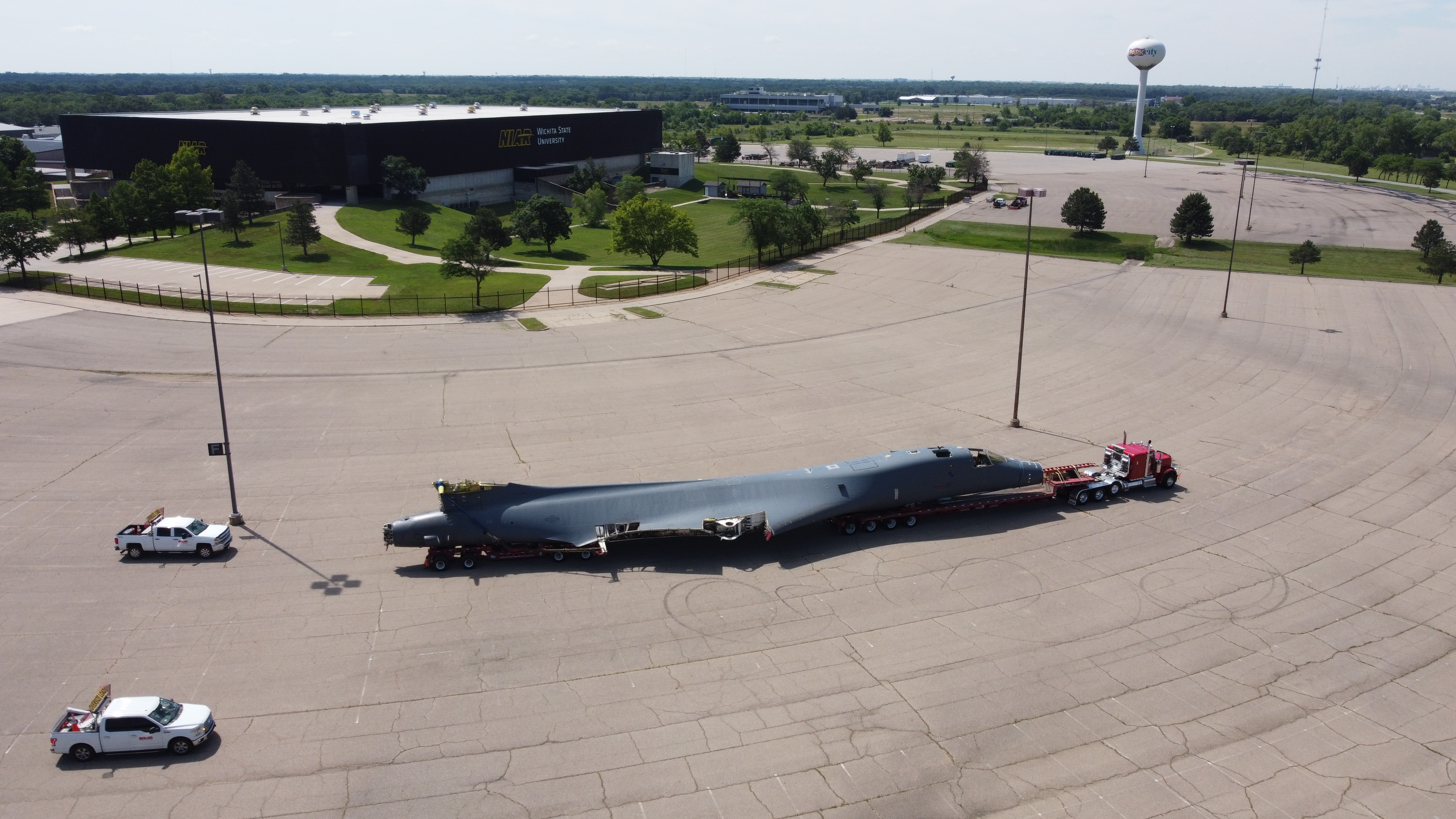The B-1 System Program Office (SPO) has increased the ceiling on their award with Wichita State University’s National Institute for Aviation Research (NIAR) to continue the B-1’s Digital Engineering transformation to $200 million. The National Center for Manufacturing Sciences helped form the strategic partnership and created a flexible contract structure, which allows NIAR and the B-1 SPO to adapt to real-time requirements and warfighter needs.
A major consideration on increasing the contract ceiling was the return on investment from the digital engineering strategy realized by the SPO since the program began in 2020. To date, NIAR has delivered over 24,000 digital models and developed engineering tools being used to aid in the management of the fleet; increasing the number of B-1 aircraft available to fly at any time. Recently, digital tools were used to assess unexpected damage on an aircraft and generate a repair strategy, restoring full operational capability while reducing the return to service time by over 50 percent.
“Our partnership with NIAR continues to pay significant dividends to the B-1 enterprise,” said Lieutenant Colonel Adam Parks, Structures and Configuration Branch Chief in the B-1 Program Office. “It accelerates our ability to respond to urgent needs from our main operating bases at a fraction of the cost. We will continue to invest in partnerships which enable aircraft availability for Air Force Global Strike Command and accelerate our ability to get combat capability to the warfighter.”
During subsequent visits to NIAR, B-1 SPO personnel observed another unique opportunity for NIAR to support the longevity of the B-1. To keep the B-1 operationally effective until the B-21 is operational, nearly half the B-1 fleet will require a major structural repair, which involves replacing over 25 feet of the upper fuselage just in front of the wings. The combination of the NIAR digital twin team’s specific B-1 experience and the NIAR-WERX MRO team’s commercial airframe modification capabilities spurred a discussion on NIAR’s ability to prototype a repair of this scope. NIAR will use digital tools to design the repair before prototyping the repair on a retired airframe. Once the prototype has been successfully executed, the repair will be validated on at least one in-service aircraft.
“NIAR is eagerly looking forward to expanding the support provided to the B-1 SPO to a repair of this size, complexity, and criticality,” said Melinda Laubach-Hock, NIAR B-1 program director. “The NIAR-WERX MRO and NIAR B-1 Digital Twin teams each bring unique experiences that, coupled together, provide a very capable team to take on this challenging prototype. We believe that inserting modern technology and assembly sequencing simulations to identify and mitigate problems virtually ahead of the physical repair is crucial to reducing return-to-service time.”
Over the past 18 months, NIAR has expanded digital engineering support to the B-1 SPO beyond structures to include systems and weapons support. NIAR has reverse engineered critical components to transition manufacturing from legacy castings/forgings to contemporary machining, built model-based systems engineering models to simulate the operation of key systems, and performed safe separation studies and trajectory simulations to support weapons integration. NIAR has also aided the SPO by sourcing and procuring hard-to-get or obsolete parts for future repairs and current spares needs.
“Expanding the support NIAR provides to the B-1 SPO from primarily structures to a wholistic weapons system approach is key to maximizing the benefits of digital engineering,” said John Tomblin, WSU senior vice president for Industry and Defense Programs and NIAR executive director. “Increasing the breadth of support we are providing on B-1 also expands the unique educational opportunities for applied learning we can offer to students at Wichita State.”
Case #AFLCMC-2024-0021


